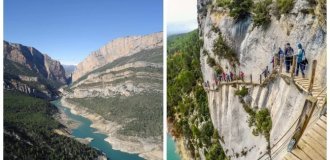Space games: 11 mesmerizing photos where not everything is what it seems at first glance (12 photos)
Icy Miranda in the gaps of ancient cracks, a Martian crater whose slopes are covered with ruts like the pages of an old book, Mercury waving its "tail", and the tiny ISS frozen against the solar disk, like a pinprick in the luminary. 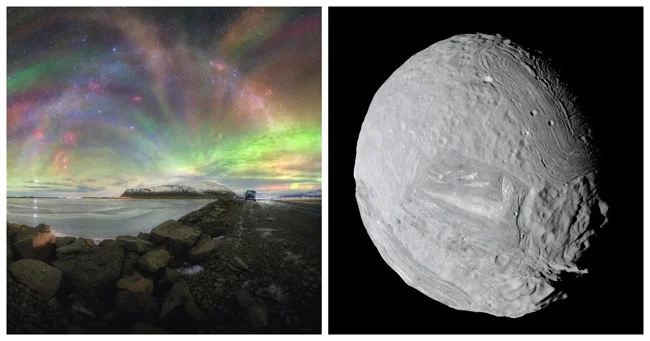
All these shots have one thing in common: they show space as a place of constant metamorphosis, where even the familiar is very similar to an optical illusion.
1. Passing the ISS against the Sun 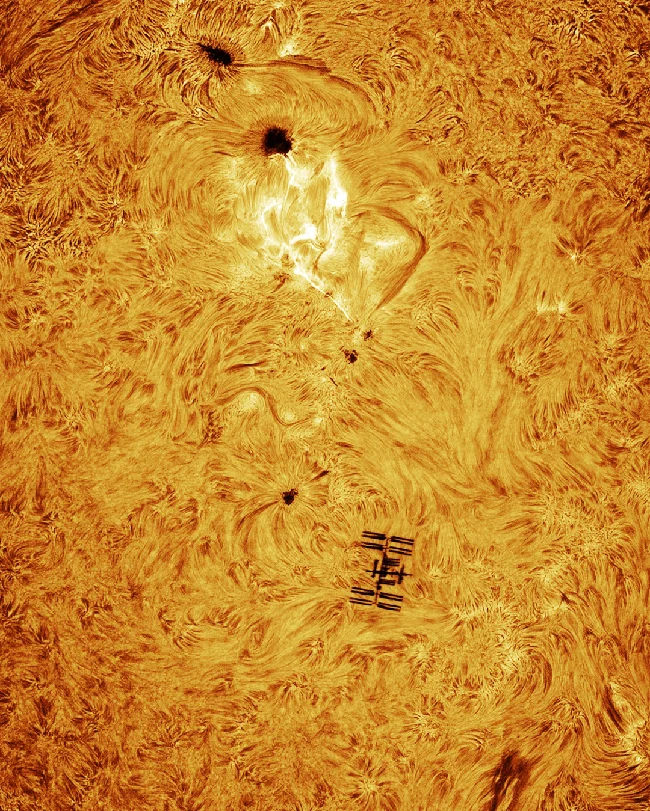
A guy set up telescopes in the desert and pointed them at the Sun, waiting for the ISS to fly by. And at that very moment, the sun decided to put on a show - a powerful flash gave him a unique shot for all time.
2. Nuclear Glow 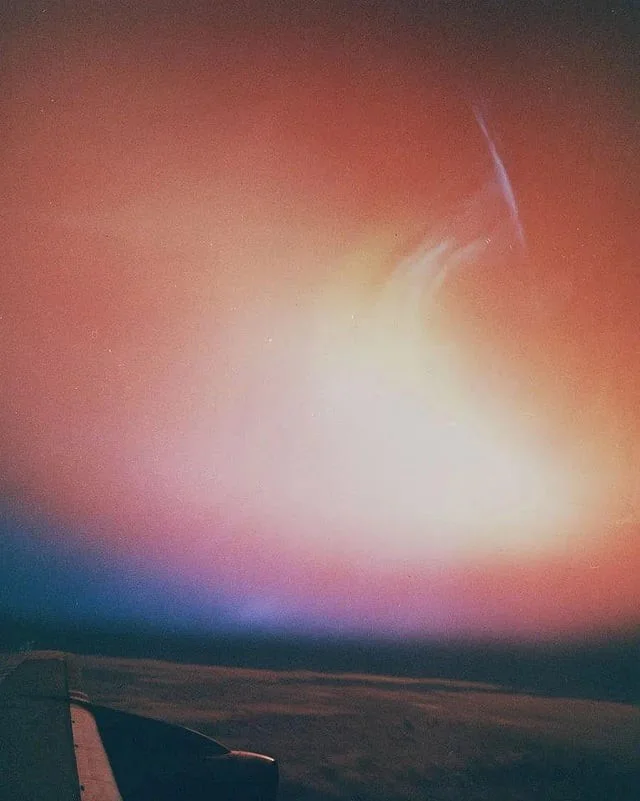
The nuclear glow from the Starfish Prime thermonuclear explosion, with a yield of 1.5 megatons of TNT equivalent, carried out on July 9, 1962 at an altitude of 400 kilometers, was observed over vast areas of the Pacific Ocean.
Here is an eyewitness account from Kathleen Norris, a high school senior in Honolulu at the time:
I remember a sudden bright green flash that turned an ordinary night into bright day... Over the next 40 minutes, the sky changed from yellow to red, then to a deep blood red... Then it turned to an icy blue, then indigo, and finally it was night again.
An atomic explosion in the upper atmosphere or even in space creates a powerful electromagnetic pulse and a stream of charged particles. Some of these particles rush toward our planet, causing a fantastic glow visible to the naked eye at great distances and lasting up to 8 minutes. Even electronics in the blast radius are damaged.
3. NASA's James Webb Space Telescope Captures an Einstein Ring 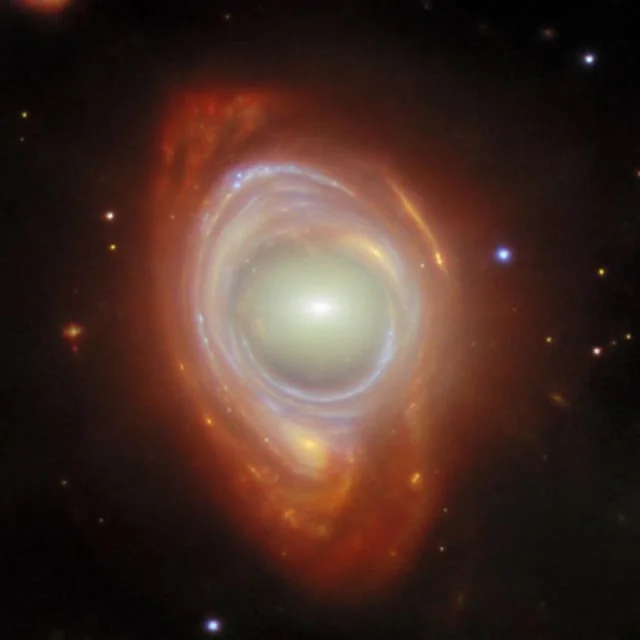
What appears to be one galaxy is actually two very far apart. The closer galaxy is in the center of the image, while the more distant one appears to surround it, creating a phenomenon known as an Einstein ring.
Einstein rings are caused by gravitational lensing, when light from a distant galaxy is bent by the gravity of a massive object closer to it — in this case, another galaxy. Light from a distant galaxy that would normally travel in a straight line follows the curve of spacetime as it is distorted by gravity. This not only makes the light from behind the galaxy appear brighter, but also acts like a natural magnifying lens.
This phenomenon was predicted by Albert Einstein in his theory of relativity.
4. The 2021 Stars and Nebulae Contest Winner 
The California Nebula, photo by Terry Hancock.
5. A photo taken on the surface of an asteroid 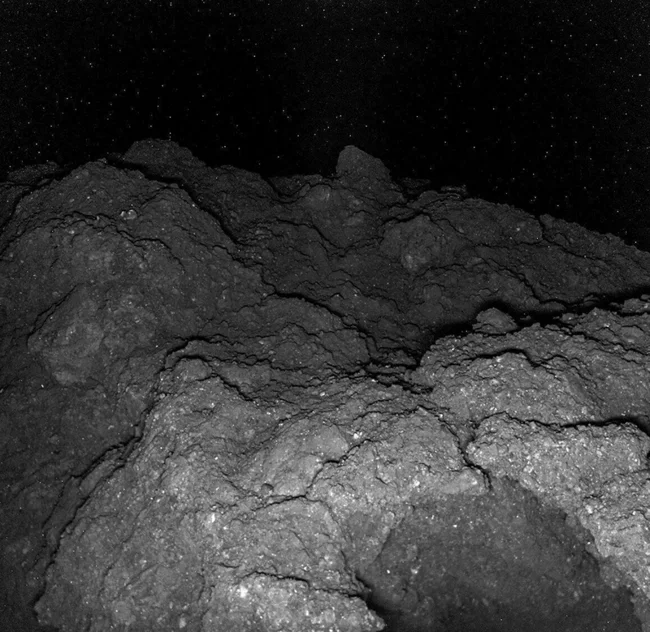
On October 3, 2018, Japan's Hayabusa2 (Sapsan-2) mission delivered the MASCOT lander to the asteroid Ryugu. After hitting a boulder, the lander flipped about 17 meters away and eventually landed in a shadowed crater.
This image shows Ryugu's rugged, pristine surface, rich in carbonaceous materials. The image was taken before MASCOT's battery died, and it provides a unique glimpse into the asteroid's pristine geology.
6. This is not a comet, but the planet Mercury with a sodium tail 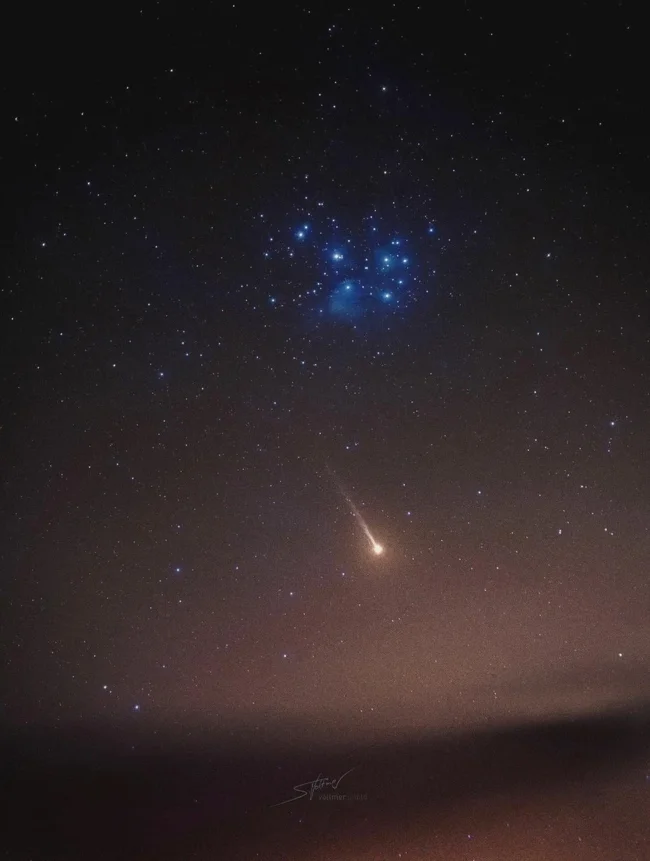
The comet-like sodium tail of Mercury was discovered, by astronomical standards, recently - in 2001. At the moment, astronomers from all over the world have taken several dozen similar pictures. The difficulty of photographing the tail of Mercury is that a combination of several factors is required - the planet reaching its maximum radial velocity relative to the Sun, its significant angular distance from the Sun and suitable meteorological conditions.
7. Colors of the Night 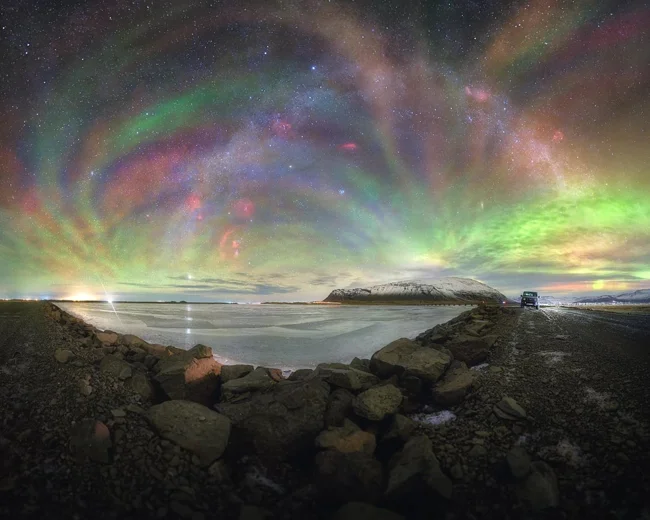
Photo taken in Iceland by Louis Leroux.
8. Jagged slopes of a crater on Mars 
9. Orbital sunset over Africa 
Photo by NASA astronaut Don Pettit.
10. Uranus' moon Miranda photographed by Voyager 2 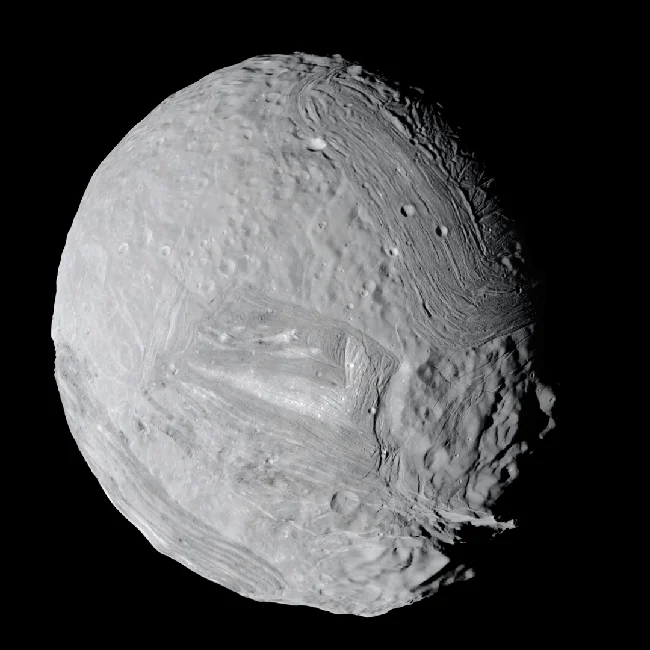
The closest and smallest of Uranus's five major moons. Discovered in 1948 by Gerard Kuiper and named after Miranda from William Shakespeare's The Tempest. Verona Escarpment is visible at the bottom right.
11. Hubble image of NGC 6960 (the Veil Nebula), a cloud of heated and ionized gas and dust in the constellation Cygnus 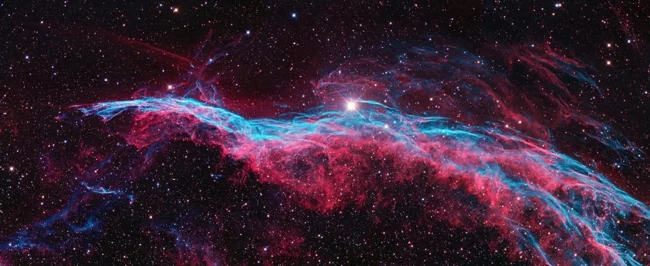
The Veil Nebula, also known as the Loop or Fishing Net, is a giant diffuse nebula in the constellation Cygnus. It is actually the remnant of an ancient supernova explosion that occurred about 5,000 to 8,000 years ago. During this time, the ejected material formed an extended glowing cloud that spans 3 degrees in the sky, about six times the diameter of the full Moon.
The nebula is located at a distance of about 2400 light years from Earth. It was discovered on September 5, 1784 by the English astronomer William Herschel.
Due to its enormous size, various parts of the nebula stand out visually and have received their own names. So, although the object is one, its fragments are often considered independent nebulae.

